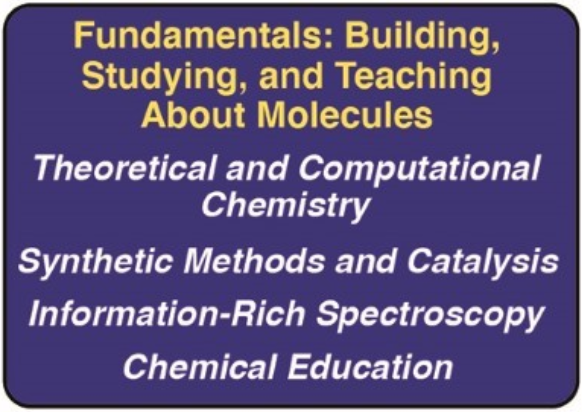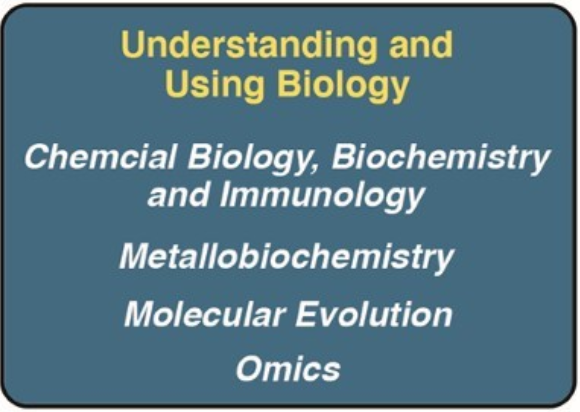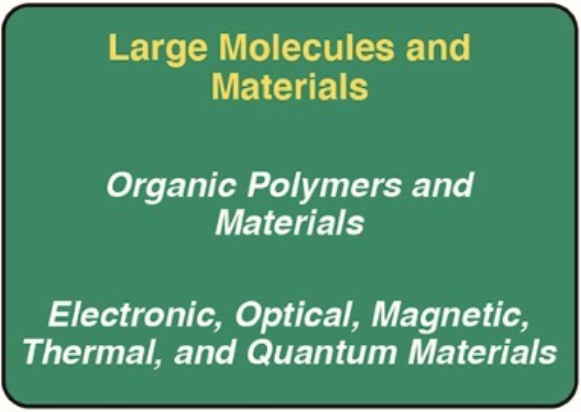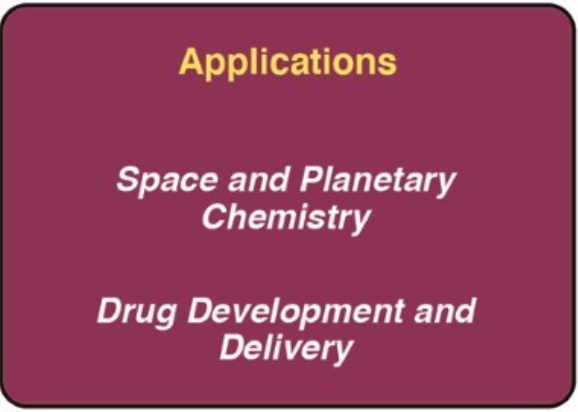Research is an integral part of our three-part mission: to gain fundamental and applied knowledge, to enable discoveries that benefit humankind, and to train and empower the next generation workforce. Our dedicated undergraduates, graduate students, postdoctoral research scientists, and faculty drive research projects that span the full breadth of modern chemistry and biochemistry and frequently extend to related disciplines in physics, biology, mathematics, computer science, and engineering. Chemistry is the central science, and the School of Chemistry and Biochemistry is at the heart of wide-ranging molecular research at Georgia Tech and elsewhere.
In the last fiscal year, the School received approximately $20 million for sponsored research from a mixture of grants and contracts from government funding agencies (about 85%) and industrial and philanthropic sources (about 20%). In addition to providing the resources for discovery, research is essential to our efforts in training and education. We emphasize interdisciplinary training opportunities for our undergraduate and graduate students and also, during the summer, undergraduates from other institutions.
We enjoy the use of state-of-the-art instrumentation in the laboratories of individual research groups and in extensive core facilities. Similarly, we pursue scientific insights in teams that may be composed of a single laboratory all the way to major research centers comprised of multiple research groups at multiple institutions. In our view, what matters most is the questions that we ask and the problems that we choose to address: we’ll work and share credit with anyone who can help reach those goals.
Below you will find descriptions of general areas of research currently active in our department. Readers are encouraged to consult the websites of the faculty involved and to contact them for additional information.
Fundamentals: Building, Studying, and Teaching About Molecules
Theoretical & Computational Chemistry
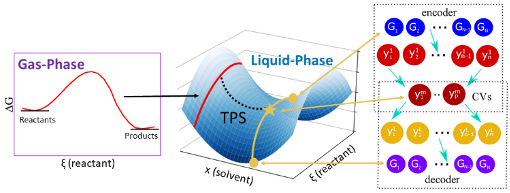
Theoretical Chemistry involves the development of new mathematical models to describe the properties of molecules, using techniques from quantum mechanics, statistical mechanics, and chemical dynamics. These models can be rather complex, and their application to chemical problems may require substantial computer resources. The School of Chemistry and Biochemistry has a strong group of faculty working in the development and application of theoretical chemistry methods. These groups collaborate closely to form a tight-knit theoretical chemistry core that is more than the sum of its parts. Research topics include improved molecular dynamics and Monte Carlo simulations, efficient quantum dynamics techniques, electronic structure methods that yield a deeper understanding of intermolecular forces, and the incorporation of machine learning in theoretical chemistry. Georgia Tech is one of the lead institutions in the development of the open-source electronic structure package Psi. Application areas span many topics ranging from electrochemical energy storage, charge and energy transport in correlated materials, light-matter interactions, and how non-covalent interactions influence drug binding, biomolecular structure, and crystal packing. The School has access to over 44,000 processor cores for demanding simulations, through the Georgia Tech Hive supercomputer and the Phoenix cluster.
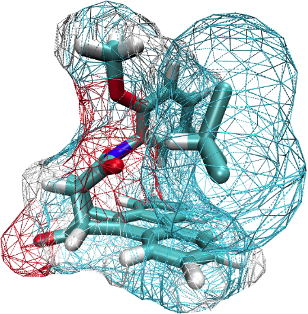
Computational modeling has increasingly become an integral part of many experimental research groups. These groups develop and utilize various computational methods to help guide, analyze, and understand their experiments. Georgia Tech boasts a number of professors who utilize computational modeling in their research. Research areas include bioinformatics, quantum spectroscopy, and liquid- and glassy-state dynamics in complex biological systems
Faculty
molecular dynamics simulation to probe intramolecular and intermolecular motion on timescales ranging from MHz to PHz
Biological imaging and spectroscopy; metal cluster fluorophores; fluorescent proteins; protein-protein interactions; novel imaging and spectroscopies; optically modulated fluorescence; statistics for multidimensional data analysis; antibacterial sensitivity; in vivo imaging
molecular dynamics simulations; protein dynamics; membrane proteins; protein synthesis; bacteria-specific systems and processes
Biomolecular simulations, molecular dynamics simulations, enhanced sampling simulations, valence bond simulations, machine learning, protein design
Pathogen-membrane interactions and virus-host molecular evolution using molecular dynamics simulations, fluorescence spectroscopy, and single-virus microscopy
Theoretical chemistry; quantum dynamics; non-adiabatic dynamics; quantum chemistry; quantum embedding; charge transport; light-matter interactions
Molecular dynamics, Monte Carlo, quantum chemistry, high-performance computing, electrochemistry, electrochemical energy storage, self-assembly, nanostructured materials, ab initio modeling, machine-learning
Quantum chemistry; intermolecular forces; theoretical chemistry; algorithms; modeling; machine learning and data generation; software development; high-performance computing
Synthetic Methods and Catalysis
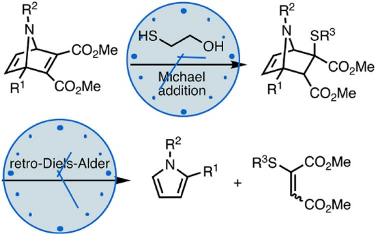
The preparation of new molecules, macromolecules, and materials lies at the heart of organic and inorganic chemistry, requiring a deep knowledge of synthetic methods, mechanistic understanding, and catalysis. In the molecular realm, our faculty are investigating numerous cutting-edge approaches for a broad array of projects. This includes the development of efficient synthetic methods that enable application across a range of interdisciplinary topics, including biomass upgrading, polymer synthesis, drug development, carbon- and nitrogen-fixation, and electronics applications. Bioactive natural products and small molecules are active targets for therapeutic application. Virus particles are being developed for applications in cell targeting, diagnostics, vaccine development, and materials self-assembly.
Polymer syntheses push the limits of complexity in macromolecular systems using innovative concepts from synthetic organic chemistry, with the design of novel monomers for the construction of functional polyamides, the development of small molecule reagents for the dynamic modulation of branched polymer architectures, and the investigation of new concepts for creating covalent bonds in challenging contexts. Conjugated polymers are being synthesized for both solid state (photovoltaic and charge transport) and redox (electrochromism and electrical charge storage) possibilities.
Transition metal complexes are being prepared in unusual coordination environments and oxidation states. Metal–ligand combinations that undergo reversible low-energy electron transfer can achieve kinetic control over radical reactions, enabling stoichiometric and catalytic processes that are challenging or inaccessible using current methods. Small clusters of low-coordinate late transition metals are designed to achieve difficult bond-forming and bond-breaking processes, to enable new catalytic cycles. Synthetic studies disentangling the complex electronic structure of f-block materials, to elucidate spectroscopic and thermodynamic signatures of electronic structure phenomena unique to lanthanide, actinide, and transuranic materials.
The controlled synthesis and study of nanocrystals builds a scientific base for the large-scale production of nanocrystals with well-controlled compositions, structures, shapes, and other properties sought for applications in areas including optical sensing/imaging, biomedical research, photonics, electronics, and catalysis. The synthesis of transition metal oxides, oxyfluorides, and fluorides enables detailed studies of the role of structural disorder in the response of solid-state materials to temperature and pressure, notably in compounds that shrink on heating (displaying negative thermal expansion).
Research underway concerns the development of metal-specific fluorescent probes for the investigation of the intracellular chemistry of trace elements, the mechanistic study of metalloprotein-catalyzed reactions, as well as the development of protein-based, semi-synthetic organometallic catalysts in aqueous solution.
Faculty
New polymerization methods and new polymer classes, enabled by monomer design and synthesis.
Click chemistry methods for bond formation and controlled release, immunomodulatory compounds, new biocojugation methods.
Organic synthetic methods, natural products synthesis, and medicinal chemistry.
New polymerization methods and new polymer classes, enabled by monomer design and synthesis.
Synthesis of ligands for the control of f-element coordination chemistry, electronics, and magnetism.
Histone deacetylase inhibition, drug design, anticancer and antiviral agents.
Polymer materials and electrodes for solar fuels; transport-coupled redox reactions, durability of materials
Monomer synthesis for conducting polymers, cross-coupling polymerization methods.
Late transition metal coordination chemistry and catalysis for carbon capture and other applications.
Catalysis for organic synthesis and energy conversion using earth-abundant transition metals.
Rational and controlled synthesis of metal nanostructures with varying shapes and functions, and application of these materials for catalysis and energy transfer.
Information-Rich Spectroscopy
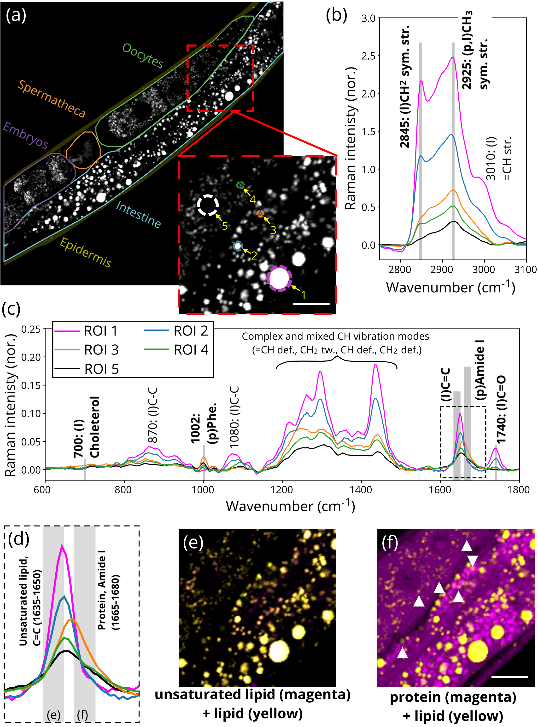
Utilizing ultrahigh resolution to ultrafast studies, a broad range of researchers develops and applies cutting-edge spectroscopies to understand important chemical systems. Our groundbreaking studies of new materials continue to drive advances in catalysis, fluorescence and chemical imaging, biological dynamics, reduced-dimension nanostructure properties, and molecule-light interactions. These fundamental insights of molecular and nanomaterial behavior inform design of further improved materials tailored to a wide range of applications. The School of Chemistry and Biochemistry has many programs that focus on surface and interface science, aiming to understand the detailed geometric and chemical structures of both “hard” and "soft" surfaces. There is a major emphasis on understanding charge transport and energy exchange under nonthermal, nonequilibrium conditions. The programs focus on energy and environmental/sustainability issues and applications as well as biological and medical application.
Faculty
Information-rich ultrafast laser spectroscopy, with emphasis on coherent Raman techniques, for interrogation of biological materials and systems.
Fluorescence spectroscopic methods in biology and statistical methods for rapid disease diagnosis.
Nanomaterials and fluorescence spectroscopy toward an understanding of exciton photophysics; sensor technologies for chemical biology studies and early disease detection.
Surface spectroscopy to characterize radiological damage to materials in space; spectroscopic characterization of planet-surface chemistry; analysis of sample retrieved by NASA missions; methods for atmospheric particulate removal.
Time-resolved spectroscopies for investigation of energy conversion and storage and biosensing
Chemical Education
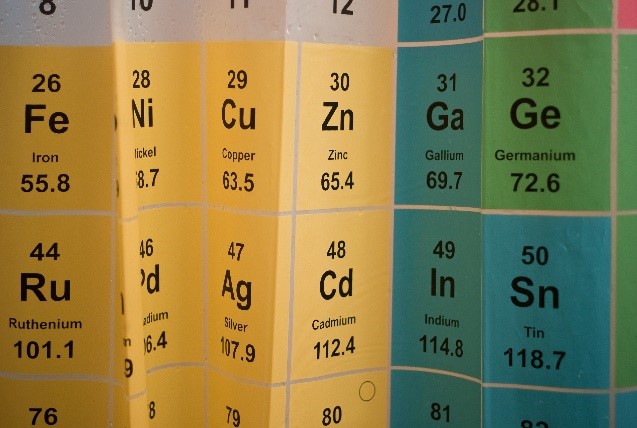
Research efforts in the area of chemistry education in the School of Chemistry and Biochemistry focus on the development and evaluation of student-centered curricula. Faculty in the School incorporate cutting-edge educational technologies to facilitate student learning, develop and implement laboratory experiments with relevance to modern industry and academia, and study the effects of these innovations on student learning.
In response to the COVID-19 pandemic, faculty and graduate students in the First-year Chemistry Program developed a synchronous online delivery (SOD) instructional model for remote laboratories. The SOD model incorporates freely available simulations of chemical phenomena as the basis of data and observations, which students investigate in groups through video-conferencing software. Using a modified version of the Meaningful Learning in Laboratory Instrument (MLLI), we have studied students' expectations and self-reported meaningful learning in this mode of instruction (Jones, Shepler, and Evans 2021). We are also investigating differences in the expectations and experiences of students in a hybrid mode (alternating SOD and in-person experiments) and a fully in-person instructional mode.
Drs. Pamela Pollet and Charlie Liotta have pioneered a new Vertically Integrated Project (VIP) focused on chemistry in flow (ChemFlow). Bringing together an interdisciplinary team of faculty, graduate students, and undergraduates, the ChemFlow VIP team provides students with real-world laboratory and research experience. In 2021, the team reported the reaction of diphenyldiazomethane with benzoic acids in flow and described students-led chemical education research (Pollet et al. 2021) and the transfer of the results to laboratory instruction. This work builds on a model of faculty-guided but independent undergraduate research and co-authorship. The Liotta-Pollet group is one example of the school of Chemistry and Biochemistry efforts to promote an environment in which students learn the importance of teamwork in addressing a research problem and develop important communication and leadership skills – all in an environment that enriches rote learning with the excitement of discovery.
Our faculty also participate in Faculty Learning Communities on campus to share with and learn from the practices and research of colleagues. For example, Dr. Pollet has recently participated in an FLC focused on incorporating positive technologies and approaches from remote instruction into future implementations taught on campus.
Faculty
Specifications-based approaches to psychomotor learning in the laboratory; applications of technology in the organic chemistry classroom; self-efficacy and affective learning in the organic chemistry laboratory
Organic chemistry, synthetic methodologies, flow chemistry, green chemistry & sustainability, undergraduate research & chemical education.
Understanding and Using Biology
Chemical Biology, Biochemistry, and Immunology
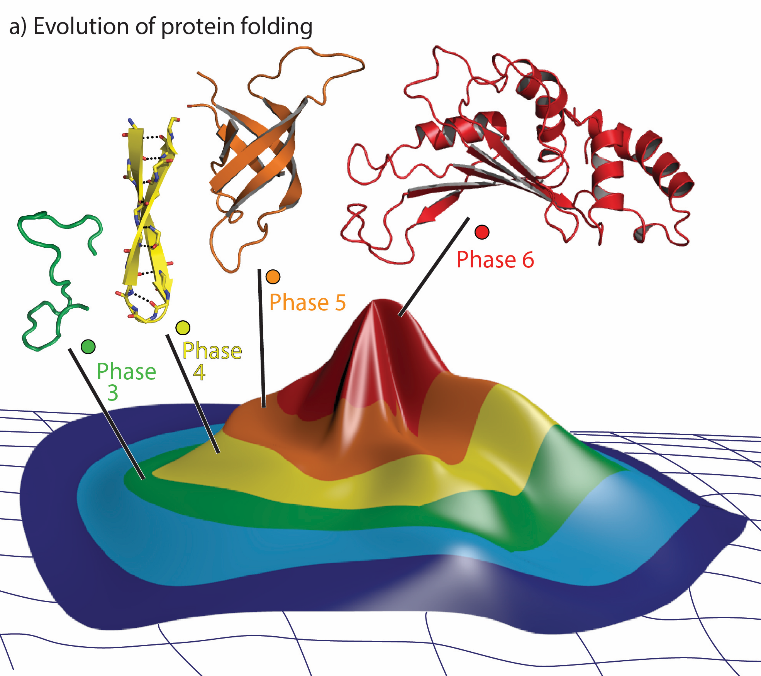
Research in the theme of Chemical Biology, Biochemistry, and Immunology at Georgia Tech’s School of Chemistry and Biochemistry seeks to apply chemical principals to understanding how life works at the molecular, cellular, organismal, and ecosystem levels. Often working with colleagues in other Schools, we pursue these fundamental insights with an eye toward applications that enhance the human condition. We pride ourselves on the interdisciplinary, collaborative, and rigorous nature of our research and training environment. The following describes a few examples of topics under current investigation in our School.
The molecular origin and evolution of life. The laboratory of Prof. Nicholas Hud is investigating how the first biomolecules arose in primordial reaction soups and how and why were these molecules chosen as alphabets around which the language of life developed. Prof. Loren Williams and colleagues study the evolution of the essential complex molecular machine of life - the ribosome. How this marvelous bond-forming engine has changed over billions of years can tell us about the evolutionary trajectories of other biological systems in the past and perhaps in the future.
Evolution and biosynthesis for useful function. Prof. Pamela Peralta-Yahya’s laboratory uses principles of directed evolution and synthetic biology to create organic molecules using enzymes and cells to compliment traditional organic chemistry schema. The group of Prof. Vinayak Agarwal studies the fascinating biosynthetic pathways that make halogenated secondary metabolites of interest, among other reasons, for their role in inter-organism communication in the oceans. The Finn group develops methods to modify the properties of virus-like particles by selection and evolution, working closely with Georgia Tech’s Molecular Evolution Core Facility, the only core laboratory of its kind in the U.S.
Immunology and drug development. The immune system occupies a central role in disease and treatment, and M.G. Finn’s group uses synthetic chemistry, molecular biology, and lots of collaboration to develop vaccines against pathogenic bacteria, viruses, and parasites. The Finn lab also develops novel molecules and materials for drug and vaccine delivery. Prof. Yomi Oyelere and his group are at the forefront of designing and crafting small molecules to engage oncological targets and other diseases.
Biomolecular structure and function. Prof. Raquel Lieberman’s laboratory is developing an atomistic level understanding of how catalysis happens within biological membranes and how small changes in protein structure underlie various ocular pathologies. The Schmidt-Krey laboratory employs electron cryo-microscopy to study the structure and function of membrane proteins.
The group of Prof. Aditi Das studies the biochemical mechanism of lipid metabolism by membrane bound cytochrome P450s. These lipid metabolites and their derivatives have various bioactivity including immunomodulation in humans. Das lab studies the interactions of these lipid metabolites with cannabinoid receptors and TRP channels.
Computational Biochemistry and Biophysics. Prof. Lynn Kamerlin and her group use a broad range of computational approaches to understand the physiochemical parameters shaping the emergence and evolution of new enzyme functions, as well as how these can be manipulated for the design of novel proteins of biocatalytic relevance with tailored physio-chemical properties.
Faculty
Pathogen-membrane interactions and virus-host molecular evolution using molecular dynamics simulations, fluorescence spectroscopy, and single-virus microscopy
Metallobiochemistry
Proteins are the molecular workhorses and machines of life, enabling the chemistry that sustains biology. Many proteins require additional prosthetics to function, including metals such as manganese (Mn), iron (Fe), copper (Cu), and zinc (Zn). Indeed, as much as ~50% of all proteins require a metal for function, making metallo-proteins the largest class of proteins in the proteome. Metals offer proteins and other biomolecules, e.g. nucleic acids, access to otherwise inaccessible structures, functions, and chemistries. The large number of metalloproteins and metal-dependent processes in biology means that virtually every metabolic and signaling pathway of consequence to Life is metal dependent. Therefore, the ability to specifically control the flow of and access to various metals or the activity of metalloproteins provides a handle with which to control the biochemistry of life and re-wire it to treat disease. However, to realize this vision, a number of fundamental gaps in knowledge must be addressed regarding the assimilation of metals into metabolism and the activity of metalloproteins in physiology.
How do various biomolecules exploit metal centers to carry out specialized functions? Biology only uses a handful of metals that are available to it. Yet, like a swiss army knife, this small subset of metals enables proteins to carry out thousands of different reactions. How does the right combination of biomolecule and metal enable specific structures and functions?
How are metals assimilated into metabolism and physiology? Given that metals are precious commodities, but also potentially cytotoxic, cells and organisms are challenged to sense, transport, and safely traffic metals to biomolecules located throughout the cell. The cellular, molecular, and chemical mechanisms underlying metal homeostasis are not well understood.
By integrating techniques and approaches that span molecular genetics, cell biology, biochemistry, biophysics and inorganic chemistry, a number of labs in the department are seeking to develop a molecular understanding of the complex mosaic of factors underlying the rules governing the handling and use of metals in biology.
Research in the Lieberman lab is focused on understanding how various metals act to stabilize certain structures in disease-causing proteins prone to misfolding and aggregation. Research in the Williams lab is probing how metals like Fe could have been used in early ribosomes to enable protein translation in the most ancient forms of life. Research in the Fahrni lab is focused on development of biosensors for key metallonutrients like zinc and copper and developing novel approaches to identify new metalloproteins. Research in the Reddi lab is focused on elucidating the mechanisms of iron and heme trafficking and signaling relevant to a host of human diseases and understanding the roles of certain metals and metalloproteins in redox signaling and metabolism.
Research in Das lab focused on the biochemical mechanism of heme bound cytochrome P450s that are involved in drug metabolism and lipid metabolism. Furthermore, they study how the membrane plays important role in controlling the redox states and facilitates electron transfer from cytochrome P450 reductase, a flavin protein to cytochrome P450s using stopped-flow kinetics.
Faculty
Molecular Evolution
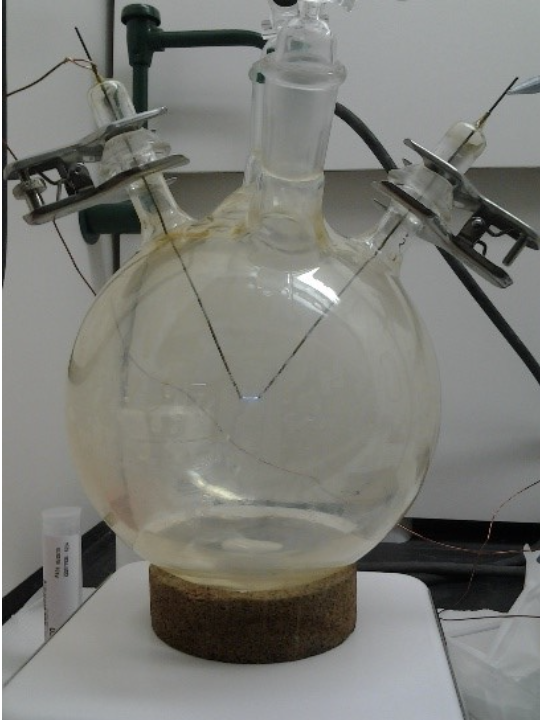
Molecular Evolution focuses on uncovering the chemical evolution that led to the origins of life on Earth, retracing the path of biopolymer evolution that gave rise to the complex machinery of extant life, and the use of laboratory methods for the evolution of biological molecules with properties for use in specific applications. The School of Chemistry and Biochemistry has research groups from across the spectrum of subdisciplines that are working on problems associated with the origins of life, these “bottom up” approaches include biochemists focused on the origins of biopolymers, physical and organic chemists focused on uncovering the abiotic reactions and catalysts that were eventually supplanted by enzyme-catalyzed reactions, and analytical chemists that are developing methods for the analysis of the complex mixtures that result from model prebiotic reactions as well as developing equipment to aid the search for life on other planets. Other groups, within the School and across the Georgia Tech campus, are using “top down” approaches (e.g., structural biology, genetics, geology) to understand the historical evolution of life on Earth. Students and postdocs working on these topics benefit by being members of a large and very active community of Astrobiology researchers at Georgia Tech. With an eye towards solving a broader spectrum of biological and biomedical problems, researchers are harnessing the power of directed evolution to develop nucleic acids and proteins with novel properties. These efforts are supported by extensive core facilities within the School and the Petit Institute for Bioengineering and Biosciences.
Faculty
Mass spectrometry methods for metabolomics, proteomics, and lipidomics analysis of complex samples; ambient-pressure mass spectrometry.
Evolution and selection of virus-like particles for applications in immunology, self-assembly, cell targeting, and catalysis. Novel methods of evolution of nucleic acid aptamers.
Fundamentals of molecular self-assembly and replication, applied to questions of the origin of life.
Emergence and evolution of novel and existing protein functions and folds
Pathogen-membrane interactions and virus-host molecular evolution using molecular dynamics simulations, fluorescence spectroscopy, and single-virus microscopy
Evolution of G-protein coupled receptor sensor systems; remodeling and optimization of biosynthetic pathways for biofuel production.
Evolutionary history of ribosome structure; applications to questions of the origin of life and of fundamental issues of protein structure and function.
Omics
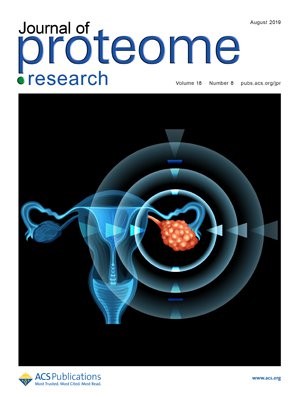
“Omics” technologies provide a systems biology approach to understanding cellular function under normal conditions and cellular response to a perturbation by simultaneous monitoring of thousands of biological molecules. “Omics” technologies encompass metabolomics, genomics, transcriptomics, proteomics, and metabolomics. The use of multi omics strategies allows one to report on the actual functional status of an organism which can then be related to its phenotype. These strategies are revolutionizing our understanding of cellular response in mammalian systems as well as terrestrial and marine environments and are at the forefront of translational research with direct impact in the clinic and environment. Thus, development and application of these technologies involves collaborative, interdisciplinary, and cross-institutional interactions. The School of Chemistry and Biochemistry has a strong group of faculty developing and employing state-of-the art omics technologies. These groups collaborate closely to overcome barriers and challenges in the application of these methodologies to diverse biological systems. The Fernández group is developing new mass spectrometry tools to investigate a variety of diseases, the effects of physical activity and to identify unknowns. The Garg lab is employing metabolomics, genomics, and transcriptomics to unravel the role of the microbiome in human diseases such as cystic fibrosis and in diseases ravaging coral reefs across the world. Using these approaches and state-of-the-art bioinformatics-based data analytics, the Garg lab is developing the mechanistic understanding underlying microbe-microbe, microbe-drug, and microbe-host interactions and how these interactions result in a “healthy” state or a “diseased” state. The Agarwal lab is pairing small molecule discovery from metabolomics to genomic and transcriptomic data in order to understand how enzymes synthesize small organic molecules that dictate ecological interactions in the ocean. The Kubanek lab is using metabolomics to discover new drugs and signaling molecules from marine systems and to decipher how organisms respond to signaling molecules. The Wu lab is working towards the development of effective mass spectrometry-based proteomics methods for comprehensively characterizing proteins and their post-translational modifications, especially glycosylation, and applying them for biomedical research. The methods will advance our understanding of protein functions and disease mechanisms, leading to the identification of glycoproteins as effective biomarkers and drug targets. The Torres lab uses mass spectrometry-based proteomics to study post-translational modifications involved in cell signaling and develops machine learning algorithms to predict functional sites of protein modification in the eukaryotic meta-proteome. In addition to these research activities, scientists in our school also maintain a state-of-the art metabolomics and proteomics core (hyperlink to Syms-C) under the umbrella of the Petit Institute for Bioengineering and Bioscience (hyperlink).
Das Lab used shotgun and targeted lipidomics to study the dynamic changes in the membrane composition during inflammatory response.
Faculty
Large Molecules and Materials
Organic Polymers and Materials
Polymer chemistry connects the study of classical small molecule reactivity to the collective material properties that arise when individual monomers are combined into large macromolecular structures. Across the school, studies in polymer chemistry and materials science are woven through the research approaches of many of our groups. Faculty are actively inventing new monomers and polymer architectures to make advances in organic electronics, stimuli-responsive particles, separation membranes, biomedical materials, and degradable polymers. This inherently interdisciplinary field frequently relies on the detailed understanding of organic chemistry in combination with the surrounding fields of analytical chemistry, physical chemistry, electrochemistry, biochemistry, and engineering.
The development of new methodologies for polymer synthesis offers limitless opportunities to invent materials with tailored properties. Degradable polymers are being synthesized through cascade reaction sequences using radical and metathesis polymerization techniques that previously only afforded polymers that persist in the environment. Robust cross-coupling methods enable the conversion of rigid biaryl monomers into intrinsically microporous polymers for cost and energy efficient separations of crude oil mixtures. “Click” chemistry is utilized to rapidly synthesize and modify polymers to create degradable antimicrobial agents, coatings for cell adhesion, and DNA transfection agents. Hydrogels that break down in the response to thiol-containing molecules offer new avenues to control the release of therapeutic agents in drug-delivery systems.
Conjugated polymers have long been a focus of the school due to the unique ability to design solution-processable materials with a range of electronic and optical applications. Vibrantly colored electrochromic polymers that reversibly switch to a transparent state upon application of a voltage are generated for heat management and color-changing lenses. Doping different families of conjugated polymers leads to opportunities for charge-storing supercapacitors with rapid charging/discharging rates. Designing monomers that precisely control the packing arrangement of polymer chains in the solid states leads to photovoltaics that efficiently convert light into electrical energy. Modifying these classes of conjugated materials with hydrophilic substituents are currently being explored towards aqueous electrolytes and applications in bioelectronics.
In addition to bulk properties, polymers also provide an opportunity to direct the organization and modulate the function of nanoparticles and colloids. Temperature or redox-responsive polymers attached to superparamagnetic particles mediate the formation of poly(colloid)s and colloidal crystals in response to external stimuli. Through collaboration with the Renewable Bioproduct Institute, abundant cellulose nanocrystals are coated with semiconductive polymers to enhance alignment of liquid-crystalline phases and new methods are being developed to modify the nanocrystal surface for use in reinforced polymer composites. A strength of polymer chemistry at Georgia Tech is the ability to rapidly translate innovations in basic science to real-world applications. This is augmented by frequent collaborations with research groups across campus and a wealth of characterization facilities provided through the Organic Materials Characterization Laboratory, Marcus Nanotechnology Building, and two student-led make-and-measure spaces, the Materials Innovation and Learning Laboratory and the Open Polymer Active Learning Laboratory which offers 24-7 access to research-grade polymer equipment in a peer learning environment. The Georgia Tech Polymer Network and Student Polymer Network provide forums for these diverse communities to gather, communicate, and initiate collaborations at both the faculty and student levels.
Faculty
Conjugated polymers and oligomers: stacked pi-conjugated oligomers as models for semiconducting conjugated materials, new conjugated copolymers. Polymers for bioengineering: functional polylactides, polymer brushes.
Controllably degradable materials, protein nanoparticle-based materials, novel polymers for membrane-based molecular separations of hydrocarbons and for water purification.
New polymerization methods and new polymer classes, enabled by monomer design and synthesis; among the applications are degradable and recyclable structures.
Multi-length and time scale characterization of conducting polymers for batteries/capacitors, photovoltaics, solar fuels, organic electrochemical transistors, sensing
Conducting polymers for electrochromism, photovoltaics, and related applications.
Electronic, Optical, Magnetic, Thermal, and Quantum Materials
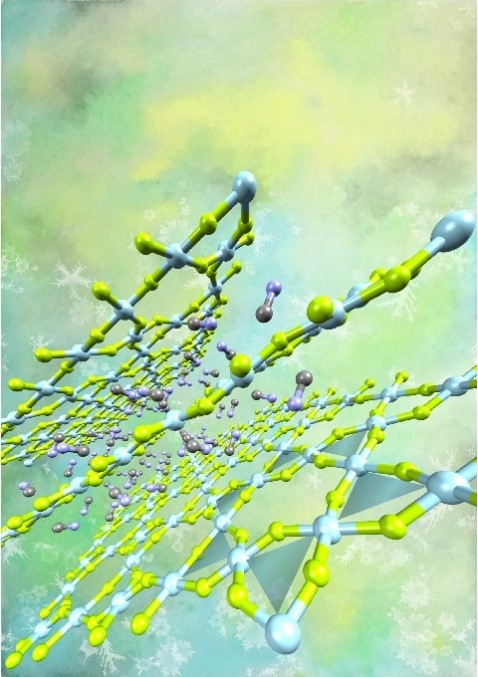
The development of human society is intimately coupled to its understanding and use of materials. A classic example is the development from stone to bronze and then iron tools. Navigating today’s major challenges, such as transitioning to low carbon energy sources and materials, the provision of adequate water supplies, and efficiently making use of ever-growing amounts of information, demands that we develop and understand sophisticated new materials.
Our faculty, in collaboration with partners at Georgia Tech, US National Labs and User Facilities, and around the world, are engaged in studies of many exciting classes of materials. Their activities include experimental and computation studies of charge dynamics in halide perovskites, which are of great current interest for use in solar cells; fundamental studies of how to control the growth of precious metal nanomaterials; the development of cost efficient electrocatalysts for deployment in fuel cell powered vehicles by exquisitely controlling the size, shape, structure and composition of the catalytically active metal nanostructures; studies of nanomagnets for use in next generation wireless technologies information storage; materials for human healthcare diagnostics and therapies; the pursuit of quantum magnetic materials for next generation computing; the development of new strategies for managing a material’s response to changes in temperature, and the creation of novel gas-solid hybrid materials with potential for gas storage and separations.
The integration of new synthetic approaches, sophisticated characterization tools, and computational methods spanning quantum mechanical, classical, and data science, is key to much of the above work.
Faculty
Metal halide perovskite materials for photovoltaics and optoelectronic devices far from equilibrium
Applications
Space and Planetary Chemistry
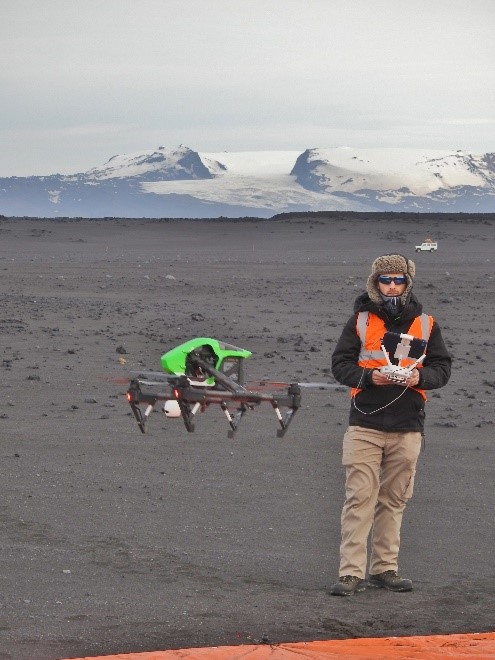
Space and Planetary Chemistry is all the “out of this world” chemistry, with some very much related to Earth science as well. Georgia Tech has significant strengths in in this field, with multiple international collaborations and significant amount of work for various NASA programs. This very interdisciplinary work includes not just Georgia Tech faculty in the School of Chemistry and Biochemistry, but faculty from multiple other disciplines and researcher from all over the world. Main prongs of this research at Georgia Tech include answering questions that will allow humans to safely explore our solar system, understanding the distribution of life on Earth in extreme environments like those on other planets, and developing measurement tools for the search for life elsewhere. Recent projects to aid in manned exploration have included the “Shoot for the Moon” project looking to mitigate challenges associated with dust on lunar space suits and the Radiation Effects on Volatiles and Exploration of Asteroids and Lunar Surfaces that seeks to understand how radiation and micrometeorites interact with surfaces on airless bodies and how to improve crew safety with new materials.
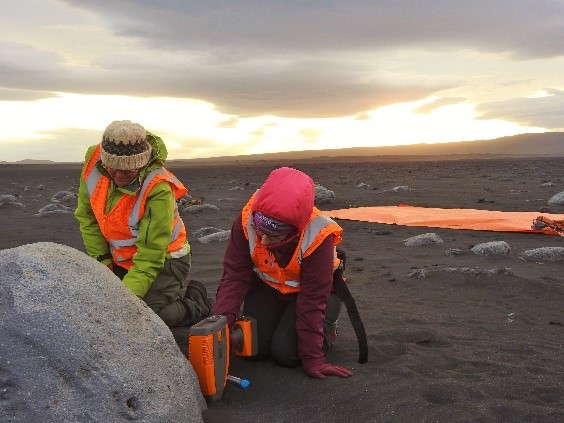
The Field Exploration and Life Detection Sampling for Planetary and Astrobiology Research and Oceans Across Space and Time seek to both understand distributions of life and biosignatures in terrestrial extreme environments in volcanic deserts and hypersaline brines, respectively. In the search for life detection, the Icy Moon Penetrator Organic Analyzer and the Enceladus Organic Analyzer both use microfluidic technologies along with laser-induced fluorescence detection to seek for organic and inorganic signatures of life in instrument platforms commensurate with missions to icy worlds. Chemists working on these projects are also part of the Georgia Tech Center for Space Technology and Research, which seeks to bring together and promote collaboration and excellence of space research at Georgia Tech across the entire campus.
Faculty
Drug Development and Delivery
New bioactive small molecules and novel technologies are needed to address unmet medical needs for the treatment of complex diseases and resolve the pharmacokinetics and pharmacodynamics limitations of some drugs currently in clinical use. A combination of the tools of organic chemistry, molecular biology, structural biology, and theoretical modeling is an integral part of modern drug discovery and development programs. Our faculty are using this multi-disciplinary approach to validate new drug targets, discover new bioactive natural products, and develop novel drug delivery systems, based on polymers and nanoparticles, to achieve targeted drug delivery. The overarching objective of these efforts is to find new therapeutic modalities to treat diseases ranging from cancer, malaria, metabolic and protein folding diseases, and bacterial infections.
Faculty
Cytochrome P450s to study drug metabolism and minor cannabinoid metabolism; development of small lipid molecule derivatives for controlling the immune system.
